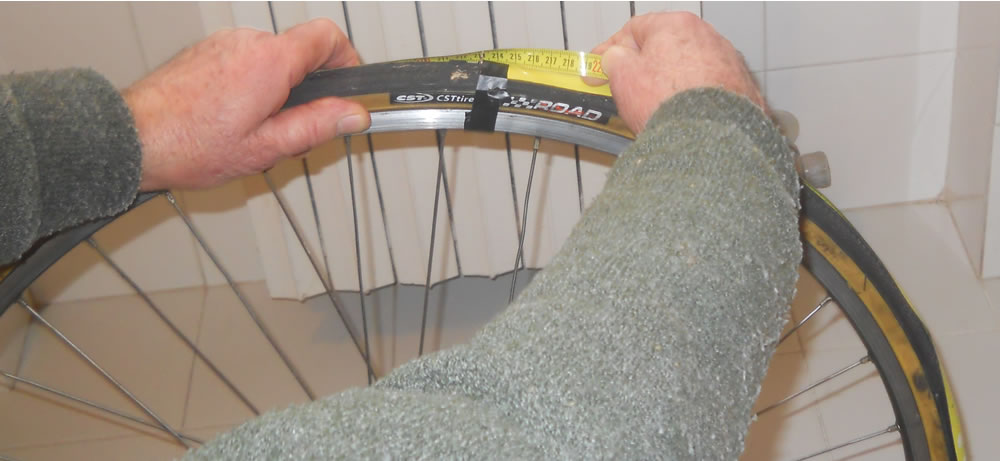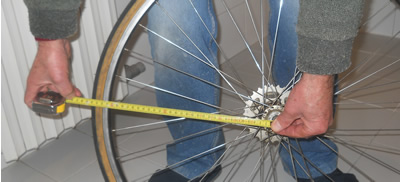
The measurement that is of interest here refers to the rim fitted with the tire. This data is fundamental for calculating the development of bicycle ratios.
There are at least three measurement methods which are illustrated below:
1) Direct measurement with flexible meter
Wrap the tape measure on the surface of the tire, securing it on one side with tape and measuring the value after making a turn. Here the measurement was made with the wheel removed but it can also be done with the wheel on the bike.

In this example, a circumference of 213 centimeters was measured for a 700x28c 28-622 wheel
The direct measurement of the circumference is the most precise method because it takes into account the tire wear and inflation pressure, factors that affect the real value of the wheel circumference.
2) Measurement of the wheel radius
The meter measures the distance between the pin and the surface of the tire, the result is multiplied by 6.28 (2pi) and the circumference is obtained which, in this example, was 216 Centimeters.
Why are there 3 centimeters more?
Because the meter from the end of the pin to the surface of the tire is slightly inclined and for this reason it measures three centimeters more thus introducing a measurement error of about 1.4% compared to the direct measurement seen in point 1.

3) Calculation of circumference using the data printed on the tire
This is the most approximate method because it does not take into account the tire wear and pressure. To have the circumference just multiply the nominal diameter of the tire which in this case is: 622x3.14 (pi) = 193 Centimeters.
With this method the measurement error is approximately 9% compared to the direct measurement.